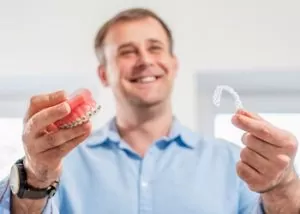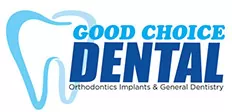Having straight teeth gives you confidence in your smile. It also makes dental hygiene easier to manage because crooked teeth are more susceptible to dental decay. Orthodontic treatment is the only way to correct crooked teeth and misaligned jaws, but you do have a few treatment options. Let’s take a closer look at how to fix crooked teeth with orthodontic treatment.
Why Teeth Straightening Matters?
When your teeth aren’t straight, they create small awkward spaces that are difficult to clean with a toothbrush and dental floss. Straight teeth are easier to brush and keep cavity-free. Wearing braces is an investment in your long term dental health and shouldn’t be viewed simply as a cosmetic undertaking. There will be a time when your braces come off to reveal a straighter smile.
How To Fix Crooked Teeth: Your Teeth Straightening Options
The only way to straighten crooked teeth is through the application of constant pressure, to shift the teeth into straighter alignment. The mechanism for achieving this depends on your particular circumstances and will be discussed with your dentist when he or she presents a treatment plan.
Traditional metal braces
Traditional metal braces are effective and predictable in terms of their treatment outcome. They are suitable for mild to severe correction and can also assist with jaw alignment issues. They are made up of a system of wires and brackets that place individual teeth under pressure, to move them into alignment. As your teeth shift, your dentist needs to make adjustments, to ensure your teeth continue to move, and you achieve your treatment goals.
Lingual braces
Lingual braces are as effective as traditional braces, except that they are placed on the underside of the teeth. This makes them less visible to other people but may take you longer to get used to. Because of their placement, it can be challenging to brush and floss correctly when you wear lingual braces.
Ceramic braces
Ceramic braces offer the benefits of metal braces in terms of their correction, with the added benefit of being discreet. They are tooth coloured, so they are less noticeable when you smile. Because of their lighter colour, they do need to be kept very clean as it is possible for them to become discoloured and stained.
Aligners

Aligners need to be removed for eating and drinking because they are made from translucent plastic which is easy to stain and can lose shape easily. They are ideal for adults and adolescents who want a more discreet approach to orthodontic treatment, and who are mature enough to care for them properly.
What Type Of Orthodontic Treatment Do You Need?
Your dental practitioner will conduct an assessment, take digital photographs and x-ray your teeth. He or she will then present you with a treatment plan, outlining your treatment options, your timeline and the cost of braces.
The orthodontic options will be based on
- The degree of correction you need
- Your long term dental health goals
- Any supplementary treatment you might need
- Your dental hygiene routine
- Your budget
It’s important to make an informed decision for your treatment and to consider factors such as
Your stage of life
If you are an adult seeking teeth correction, clear aligners may be the best way forward. If you are an adolescent, metal braces may just suit the family budget more comfortably.
The duration of your treatment
If you are going to be wearing braces for two or three years, clear aligners may be a better lifestyle choice.
The degree of correction required
Aligners are most effective for mild to moderate teeth correction. If you have severe misalignment or jaw issues, traditional braces may work best for you.
Are there any alternatives?
Tooth correction needs to be treated with orthodontics, but if you have small teeth that create a gappy smile, or very mild crookedness, it may be possible to address the issue with veneers. Any alternatives should be discussed with your dental practitioner.
To find out more about how to fix crooked teeth, or about the orthodontics that could restore confidence and keep your teeth free of cavities, please contact us for an appointment: (02) 8203 8760.




Recent Comments